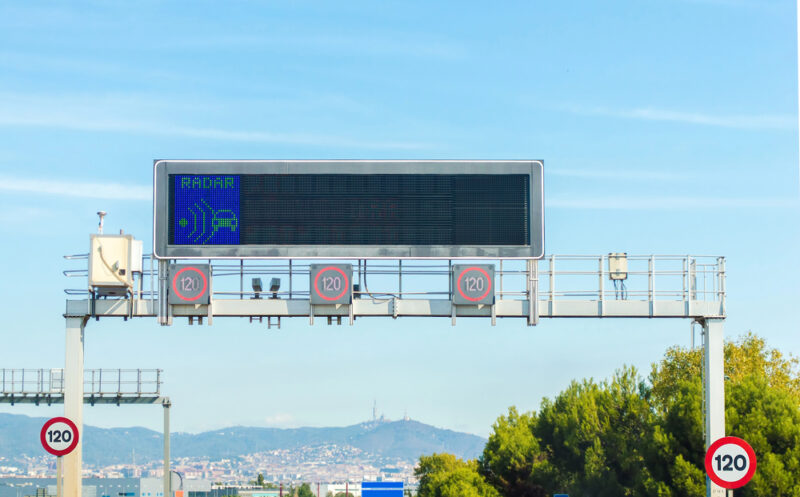In this first look, let’s find out why the city of Barcelona is about to take a step forward in its fight to improve the safety of its streets. Barcelona City Council has decided to install two new fixed radars on the Litoral ring road, specifically at kilometer point 16.1, near the Zona Franca. Let’s see what else is behind this move!
A strategic approach to reduce accidents
These new radars were not placed lightly. The city has opted for a strategic approach, based on road safety criteria agreed between the Mobility Area and the Guardia Urbana. According to accident studies, this location is a critical point with a high number of accidents. For this reason, radars have been installed with the aim of reducing accidents and improving safety.
The radars will start operating in September, once integrated into the municipal platform and connected to the control center. Warnings: if you are one of those who love to step on the gas, be careful. These devices are ready to penalize those who exceed 80 km/h.
Maintenance and modernization: a winning combo
This initiative is part of a series of improvements to the City Council’s radar maintenance contract. Not only have new control points been added, but another radar on the Ronda de Dalt will also be renewed. The city is committed to state-of-the-art technology to facilitate greater control and avoid infractions.
Currently, Barcelona has 67 radars, excluding the two new ones on the Litoral ring road. Of these, 28 are pedagogical radars. These do not fine drivers, they only inform them of the speed at which they are driving. The other 39, of course, can make you scratch your pocket if you exceed the speed limit.
How do these changes impact road safety?
The desired effect of these improvements is simple: more safety and fewer infractions. With the arrival of new technology and the renovation of existing equipment, Barcelona seeks to have more effective control over compliance with speed limits. And by preventing drivers from exceeding these limits, they hope to significantly reduce accidents.
The effectiveness of this strategy is evident when looking at the figures. In the first eleven months of 2024, ten radars in the city imposed around 150,000 fines. Interestingly, seven of them are located at the entrances and exits of Barcelona, especially on the Ronda de Dalt and Avinguda de la Meridiana.
The need for technological change
But why so much insistence on technology? Simply put, new and partially refurbished speed cameras are the answer to specific city problems. They increase safety because they are able to detect infractions almost instantly, which discourages drivers from speeding faster than allowed. It is not just a question of rules, but of civic responsibility.
The most problematic points
Barcelona’s “star radars”, so to speak, have already become known for the number of penalties they impose. The most active radar is located on Avinguda de la Meridiana, just after cars have left the AP-7 and must slow down significantly. This one in particular has issued more than 30,000 fines in a single year.
The second on the list is on the Ronda de Dalt, in the Nou Barris area, and another one on the Via Augusta near Vallvidrera. These are points where the speed of cars represents a notorious risk.
What comes next?
While anticipation is already building with the arrival of the new radars, a contractually scheduled renewal is also underway to improve their performance. And while the speeding penalty may seem like just another headache, there is no doubt that it will lay the groundwork for safer traffic.
With this commitment to road safety, everyone in Barcelona will be able to enjoy smoother and, as far as possible, hazard-free traffic. So for the thousands of drivers who ply the city’s streets every day, that’s the way things stand. Now we just have to wait for the technology to do its job from September onwards.




